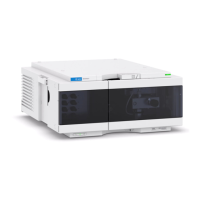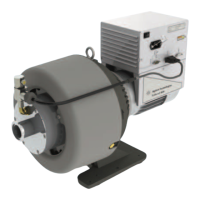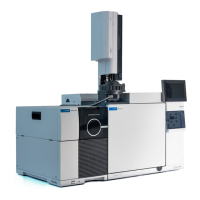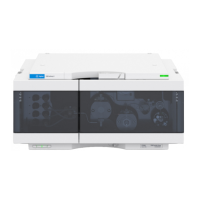4 Installing 7890 GC Columns
To Install a Capillary Column in the GC/MSD Interface Using a Standard Column Nut
5977B Series MSD Operating Manual 91
9 Wipe the end with alcohol.
10 Adjust the column so it extends this specified distance from the end of the
GC/MSD interface guide tube.
For an XTR, SS, Inert, or CI Source Installation (See Figure 21 on page 86.),
the column extends about 1 mm.
For an EI HES Installation (See Figure 22 on page 86.), the column extends 4
to 5 mm.
Use the flashlight and magnifying loupe if necessary to see the end of the
column inside the analyzer chamber. Do not use your finger to feel for the
column end.
11 Hand-tighten the nut. Ensure the position of the column does not change as
you tighten the nut. Do not over tighten the nut.
12 Check the GC oven to be sure that the column does not touch the oven walls.
13 Tighten the nut 1/4 to 1/2 turn.
14 Check the nut’s tightness after one or two heat cycles; tighten additionally as
appropriate.
15 Install the spring, tip seal, and knurled tip seal retainer on the GC/MSD
interface. (See“To Install the GC/MSD Interface Tip Seal” on page 93.) Do
not use the interface tip seal, spring, and knurled seal tip retainer with an EI
SS or Inert source. The interface socket on these sources does not allow the
tip seal installation to fit. (See Figure 56 on page 180.)
16 Gently check the alignment of the ion source and the interface tip seal.
When the ion source is aligned correctly, the analyzer chamber can be
closed all the way with no resistance except the spring tension from the
interface tip seal.
Use care when placing the tip seal on the end of the GC/MSD interface to avoid
damaging the column.
Forcing the analyzer door closed if these parts are misaligned will damage the
tip seal or the interface or the ion source, or will keep the sideplate from
sealing.

